Resources
Priority Management
Since the invention of the first time-keeping device by the Babylonians over 5000 years ago, humans have been trying to manage their lives in relation to time. Henry Ford coined "Time Management" the management term of the century when he started measuring and comparing car output by work shifts during the industrial revolution. Managing output in relation to time, may be effective if your goal is manufacturing automobiles but measuring output by time in sales has proven time and time again (no pun intended) to be ineffective in leading and sustaining lead generation activities.
Time management has become a term used by middle-level management to create an atmosphere of fairness. It is not “fair” that Leanne is working less than Jim and she is making more money. It is not “fair” that Steve is brand new and he has already become the Sales-Person of the Month, when Jim has been with the company for six years, and he has never been Sales-Person of the Month. In early stages of business (entrepreneurial stage) and lower level management it is all about results, they don’t care how much time it takes just get the results. Upper-level management and C-suite leadership it is about innovation. Innovation, meaning how to increase results and decrease time, energy, and financial resources through technology or creative solutions. Managers desire consistent output by all members (Fairness).
Here are the issues with managing your lead generation by a schedule: First, it is well documented that sales-people have more energy and grit earlier in the day, between the hours of eight and noon because this is the best time for them to overcome call reluctance and distractions. Yet, for many industries that sell direct to consumers this is not an ideal time to lead generate due to consumer work schedules. Much of your lead generation is falling on deaf ears because you are getting 90% voice mail messages and your emails are getting passed over for higher priority work.
Second, time invested does not equal results. We have all observed Jim. Jim comes in the office at 7:30 gets his coffee, sits at his desk, puts his headset on, and begins making his calls exactly at eight AM. He stays committed to making twenty-five contacts each day five days a week. But Jim is not the top producer, in fact Jim doesn’t even rank in the top five sales people in the company. It’s because Jim is managing his Time and not his Priorities. Time invested means nothing in sales. This is why the new guy, Steve, can become the top producer within a few months.
The difference is Steve manages his priorities and by managing his priorities he is managing his time. Think about the sales process as three balloons. Your job is to keep each balloon full of air. To make it more difficult the balloons are not perfect at holding air. Each of the slowly loose air and require them to have consistent attention.

The first balloon reflects your Lead Generation to potential customers or clients that you do not have relationships with yet. To inflate this balloon, you must create new leads, follow up with leads, set appointments, get contracts/agreements, and set customer expectations.
The second balloon is the customers and clients you are working with right now. If you are a service provider you are working on their deal, or file, or possibly making their meal. If you are selling a product, this is the time you take making sure the product was delivered, set up property, answering questions, managing expectations, and asking for reviews and testimonials.
The last bubble is long after the sale, these are the activities to remain top-of-mind in the customer’s mind. To keep this balloon full, you must maintain a relationship marketing plan that may include personal calls and customer events. The goal is to remind your past customers what you do, you are knowledgeable about your product or service, and you are successful doing it.
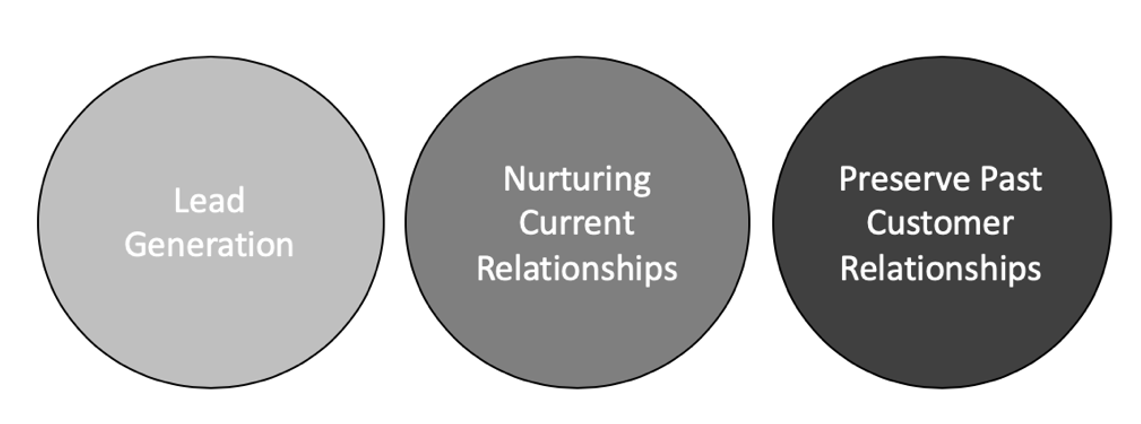
Since we are all limited by time, we are also limited by the amount of air we have the ability to pump into our balls. We can’t over inflate one ball without the other balls losing air and it is not possible to inflate all the balls at once. Since, it is also not possible for us to be in two different places at the same time. Therefore, we must switch between tasks and prioritize these tasks by your objective or goal.
For most, when you begin your career in sales, unless you take over a previous account, you will start at zero. Zero leads, zero current clients and zero past clients. All three of your balloons are empty. In order to fill them you must get into action quickly!

In the New Phase you only have one priority, generate new leads! Many new sales-people make the mistake of preparing to provide products and services for their customers or clients, that they never make Lead Generation a priority. It won’t matter if you are prepared for customers if you don’t have any to work with.
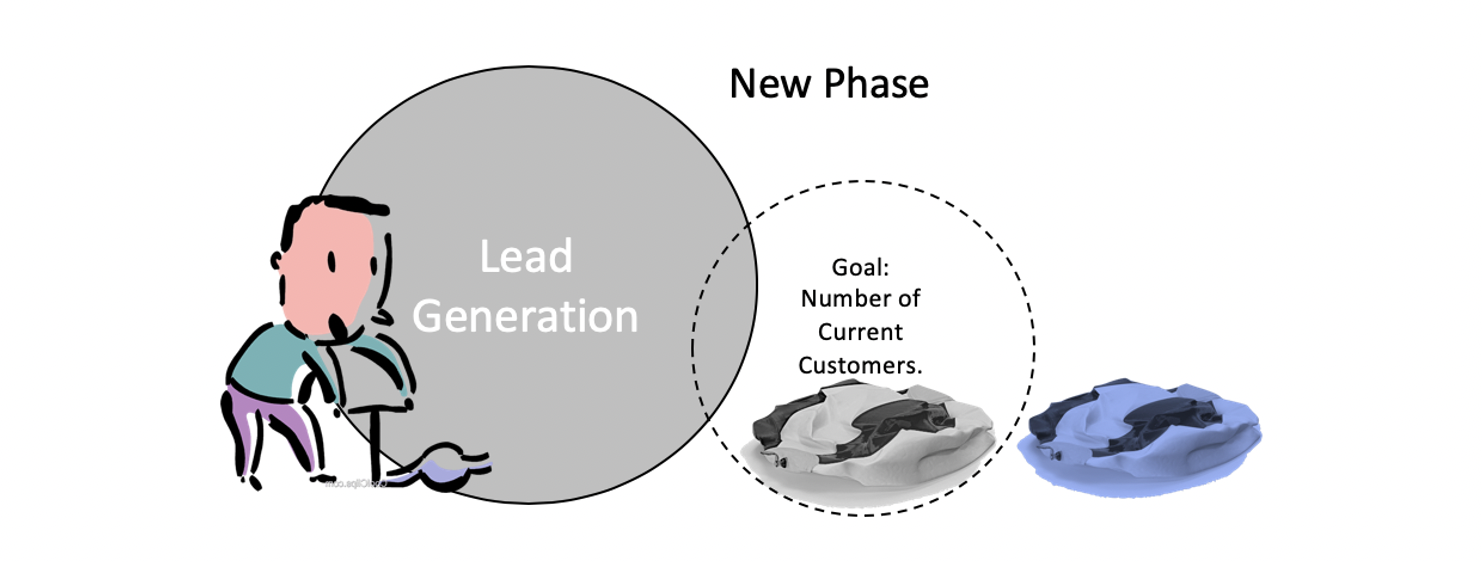
The Growth Phase is anytime your goal is to increase sales. In the Growth Phase you must divide your time by priority. Spend the majority of time on your Lead Generation activities, moderate time nurturing current customers and clients, and less time on managing past customer relationships.
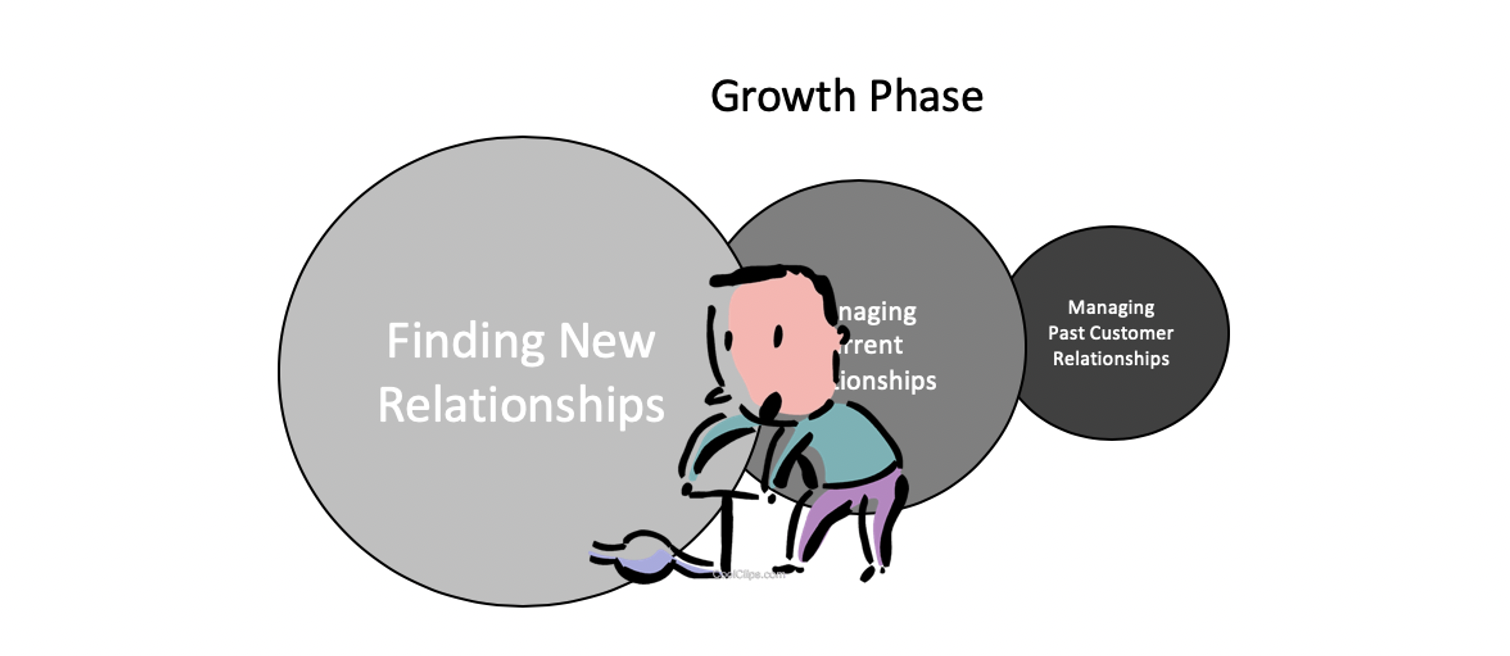
In the Adult Phase, due to your successful marketing, lead generation, and relationship marketing plan, the majority of your time is spend working with current customers or clients. Your business feels like it is operating on auto-pilot. Happy customers are referring you making your Lead Generation and follow up enjoyable. Don’t get too comfortable and lose sight of the importance of Lead Generating or you may fall into the Dying Phase.
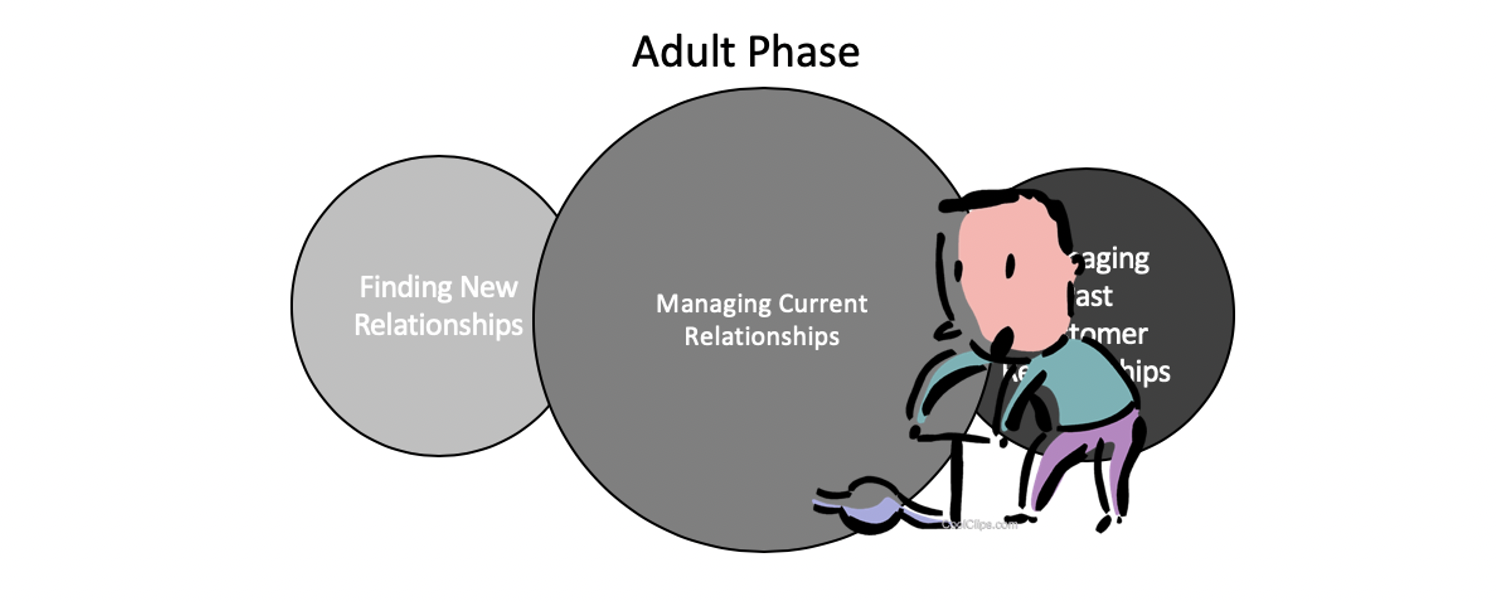
Your sales career will begin to age then die if you don’t maintain bringing fresh new leads into your business. A business cannot survive on past customers and referrals alone. Customers have many choices and some will choose to use another product or service other than yours. Other customers or clients may move to other areas or may no longer need your product or service. Therefore, when you stop Lead Generating your business begins to age, if you don’t respond by getting back to Lead Generating your business will enter the Dying Phase.

When a sales-persons business relies only on the referrals and repeat clients and they are no longer are actively Lead Generating their business will enter the Dead Phase. The Dead Phase is when they have not Lead Generated for so long and their past client database has shrunk so small that they are not receiving enough leads to support the business.

Other common mistakes in Lead Generation is to not manage a past customer or client database. Simply because they are staying not top-of-mind with their past customers they are not getting the repeat business they desire nor referrals. This leads to a Turn and Burn mentality. To keep up with sales goals the sales person must always be Lead Generating and have limited time to manage current clients. Therefore, customer satisfaction decreases, reviews and testimonials are not prioritized because they don’t rely on referral or repeat business. This business model leads to exhaustion and burnout.

Some sales people make the mistake of working one client at a time. Meaning they Lead Generate just enough to generate one customer or client. Then they switch their full focus on serving or servicing the customer or client and then once that client has been served, they switch to focusing on that one customer to refer them. Their belief is that if they do an outstanding job with that customer, that customer will surely refer them business. This seems like a good way to build a successful business, but it puts too much of the responsibility onto the customer. No matter how satisfied the customer was not all of them have people to refer and some choose not to refer at all.
One must understand that they must generate a lot of leads, many more than they think, sometimes thousands, in order to have enough clients to satisfy the quota, goal, or their expectations. And it will take three to four times the number of past customers to generate enough repeat clients and referrals to offset your lead generation activities to enter the Adult Phase.

The most common reason new sales-people fail is simply not doing enough Lead Generation activities. If a new sales person has unclear goals, unreasonable quotas, or expectations that are too high, they can feel defeated if they do not get the results they desire. This can lead to the Irrational Fear of not being good enough. This fear, if not addressed, will grow to a lack of confidence.
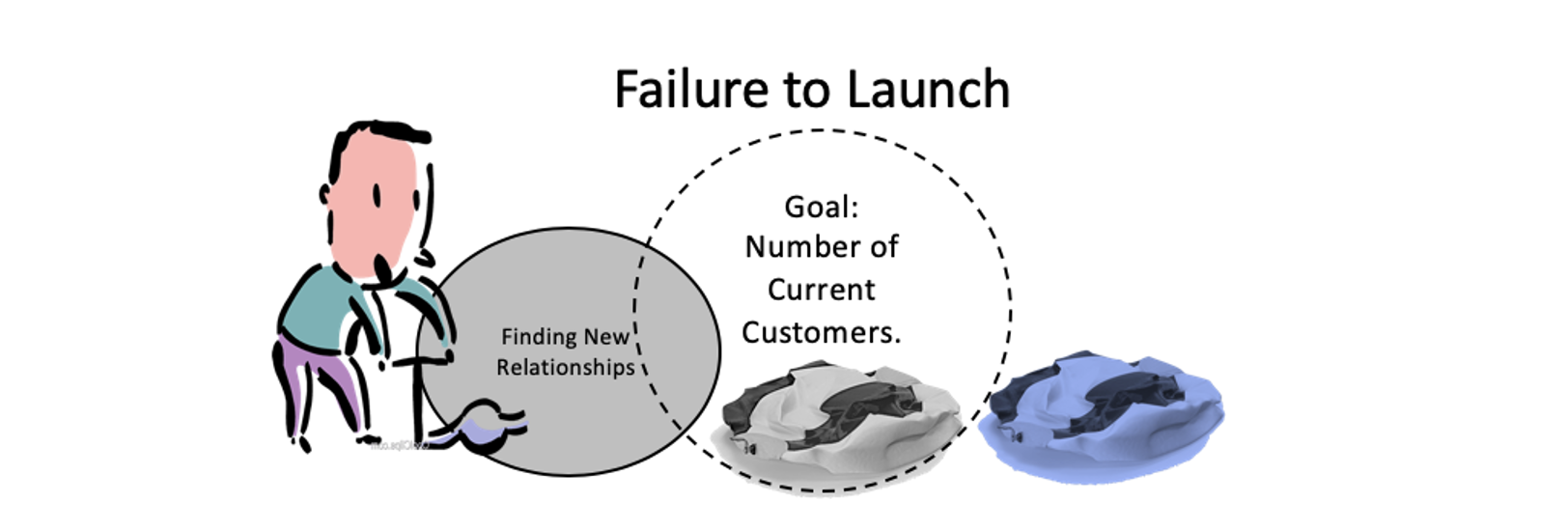
The simple solution is to manage the activities and not the result. New sales-people are learning about the product or service, they are adjusting to a new environment and culture, and some are learning to Lead Generate for the first time in their career. For these reasons their conversion (results) will be sub-standard. Have them prioritize their activities on lead generation tasks that relate directly to the quota or goal, without worrying about results. Overtime, activities will always lead to results.
When starting career as a sales-person first focus on the result you wish to achieve. For example, if you are new to the Property and Casualty Insurance industry and wish to sell 100 insurance policies over the next year and you have been told that lead conversion is one in five. Meaning, that one out of five new leads signs a new policy. This means that in order to sell 100 policies, in a year, you will need to generate over 500 new leads or 10 new leads each week.
With the goal of generating 10 new leads a week, prioritize your time and attention on the activities that may, eventually will, lead to new leads. Don’t measure yourself on conversion, measure yourself on completing the activities that will generate leads. Once you have proven that you can consistently generate leads, then you may shift your focus on your presentation and conversion. Worrying about your presentation before having a customer is like worrying about how the cake tastes before you bought the ingredients. When you have more leads than you can handle, you will have many opportunities to improve your presentation.
Develop a learning priority path for your career. These developmental steps are listed in order by priority:
1) Learn and do the activities that generate leads.
2) Develop the habit of consistently following up with leads.
3) Create, rehearse, and hone, your presentation and close.
4) Perfect your product or service delivery.
5) Build and manage a past client relationship marketing plan.
Since we can’t be in two places at the same time, we are forced to shift our activities and focus from one priority to the next. This means we are constantly moving in and out of different the phases monthly, weekly, or even daily. You must become completely transparent and self-aware of your activities and how you are managing your priorities. Managing priorities, not time.
Remember Jim and Steve? Jim was spending all his time contacting his past customers and avoiding generating new leads for his business. Therefore, his business was in the Dying phase. While Steve was in the Growth Phase spending the majority of his energy on generating and following up with new leads. This allowed Steve to quickly surpass Jim despite Steve’s lack of experience. They simply manage their priorities differently.
Homework
Time Block: Using Your $5 Million Daily Success Tracker Workbook,

1. Personal Time
a. Time off and Vacations
b. Family Appointments
2. Lead Generation Times
a. Lead Generation Activity Times
b. Potential Appointments
3. Upcoming Appointments
a. Business Meetings
b Client Events
Set Your Weekly Intentions: Using Your $5 Million Daily Success Tracker Workbook
How are you going to set your week up differently?
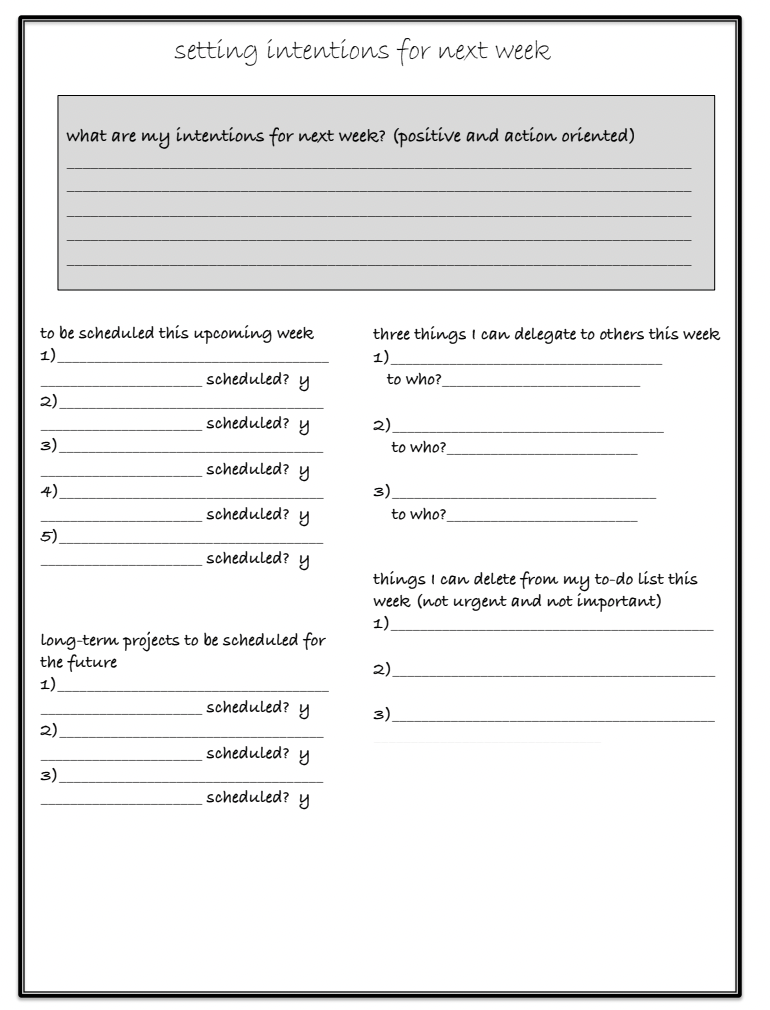
Productivity Killers
Avoiding the uncomfortable is a survival mechanism. Avoiding things that scare us is natural. In fact, fear overrides our modern brain, the part of our brain that is responsible for problem solving, language, judgement and reasoning, and triggers our primal brain that responds with fight, flight, or freeze. Since fighting your boss or customers is not a reasonable response in the 21st century and running and hiding in a closet would make you look crazy, the most common response to fear in today’s society is to freeze, to do nothing.
Freezing from fear shows up as;
1. Stonewalling; becoming stubborn or difficult to work with.
2. Excuses; seemingly justifiable reasons why you didn’t or cannot do a task.
3. Avoidance; not following up, answering, or following through.
4. Indecision; inability to decide or being wishy-washy.
We all have times when fear grips us and takes control of our rational decisions. Nobody is immune to fear, you cannot affirm it away, you cannot burry it. To become successful you must learn to acknowledge the fear. Come to accept it. Fear is like having your mother in the passenger seat of your car, while you drive through a busy city street. She is shouting for you to pay attention, pointing out all the things that may run out in front of you. Your job is to listen to your mother and drive to your destination anyway!
Listen to your irrational fear of lead generation. Take a moment and think of lead generating right now. Calling a prospect, you have not met yet and offering your product or service.
First you search for the number, then pick up the phone. Does it feel ten pounds heavier? Dial the number. Are you beginning to sweat? Now the phone is ringing… ring… ring… ring…
Your thinking, “Yes, they are not going to answer!” “Hello?” they answer.
Now what was your irrational fear telling you? The most common irrational fears that sales people have are the fear that the product is not good enough, fear of being a fraud, and the fear of failing.
Fearing the Product is Not Good Enough
Most of the time this common fear is simply not true. Yet, if you do believe it is absolutely true, that your product is inferior, then you may need to decide to sell a better product. I am a firm believer that you must believe in your product if you are to be passionate about selling it. Another way this fear presents itself is the feeling that your product or service is overpriced. This fear is compounded if you are in a service industry and the product is you! If you are the selling yourself as a service professional and you don’t believe in yourself as a product then the exercises in this book will teach you how to position yourself so this fear will become irrelevant.
The Fear of Being a Fraud
Imposter syndrome is another term for this fear. This is the feeling you are not smart enough, skilled enough, or even attractive enough to be successful at lead generation. These underlying worthiness issues can erode confidence like rust on a cruise ship. They may not prevent you from performing but if left unattended they will sink you from your potential. Clearly, no one was born with sales DNA. We all enter the sales environment with baggage from our pasts. My lack luster high school performance and the fact that I dropped out of college after my first year left me with the feeling that I was too dumb to be successful at anything. Fortunately, I was also too dumb to know when to stop trying! This fear didn’t come to sabotage my success until later in my career.
The Fear of Failing.
This fear prevents us from taking chances, when we begin to think about all the possibilities of things that could go wrong. My very logical people can come up with multiple irrational reasons why they cannot complete simple lead generation tasks. This is the fear of failure working its magic of holding them back.
This fear also presents itself as the fear of being rejected. If I could change anything about my personality it would be to remove the desire to have approval from others. The need for approval can also present itself as a fear of “looking salesy.” See if we believe that looking salesy will ultimately lead to rejection and we deeply desire the approval of others then rejection will be painful and can trigger feelings of inadequacy. In the past this feeling has spiraled me into a negative and defeated mental state that is challenging to rebound from.
Overcoming Irrational Fears
What is the irrational fear is actually telling you? If the fear is a passenger in your car, like your mother, is the fear telling you to be careful and pay attention or to stop because you are in danger? If you are not in danger, this is an irrational fear that is holding you and your success hostage. I have developed a simple exercise to help me overcome irrational fears.
When you hear one of the fears creep up on you Ask yourself, “Is this fear true?” If you answer YES then ask yourself, “Is it 100% true?” Fears are rarely 100% true. If you still feel the fear is 100% true, ask yourself, “In what ways or situations could this fear not be true?”
For example, if I have the fear that my product is not good enough and I ask myself “Is it true?”. When I honestly think about my product there are parts of the product that are outdated but my main product has a unique feature that the other products don’t include. Therefore, it is NOT 100% True. This unique feature separates it from its competitors.
If you can accept that it is NOT 100% true, then what would the opposite of that irrational fear look like? The opposite of the fear “the product is not good enough” is “the product IS good enough.”
Ask yourself “In what ways is this belief true?” Then list all the reasons that the product is good enough. Now that you have found this unique feature, all you need to do is identify the specific customers that will value the unique features your product offers and clearly communicate why this feature is important to them.
Let’s try another one. This is a dialogue with Jim a retired school teacher that has decided to begin a new career as an Insurance salesman. He has been taught by his company to create a list of friends and family. His company expects Jim to call his sphere and announcing to them that he is now in Insurance sales. Yet, Jim fears that if he approaches his friends and family, he will look salesy and they will reject him.
I ask Jim, “Is the belief that they will see you as salesy true?”
He responds with a confident “Yes.” I ask again
“Are you sure, it is 100% true?”
Jim pauses then says, “Well I suppose I don’t know what they are thinking.”
“What would the opposite of that fear be?” I ask. Jim responds, “I don’t know.”
I ask again, “What would be the opposite thought of “I don’t want to be salesy?”
He hesitantly says, “I want to look salesy.”
“If you accepted that belief of your fear how would your life look differently?” I said.
“I would be more confident and talk to more people about insurance.” Jim responds.
“Exactly!” I said, “When people need to buy insurance, they need an Insurance Sales person. If you look and act like one, they will think of you when they are ready to buy.”
I continued, “What do you choose to believe from this point forward, the fear that you don’t want to look salesy or the belief that you want to look salesy?”
“I choose to look like a salesperson.” Jim says with a smile.
This exercise will help you overcome the common irrational fears. Throughout this book we will deal with developing more skills to help you build your confidence in lead generation.
Daily Activities: Using Your $5 Million Daily Success Tracker Workbook

Anyone that truly knows me know I am not a Ra! Ra! kind of guy! In fact it often times makes my skin crawl. That being said I have fount that positive daily thoughts allow me to have a strong mind allowing me to overcome adversity easier. Therefore, your assignment includes the practice of strengthening your mind with positive self talk. "I am" statements will slowly override the rapid negative thoughts that are holding you back from your potential.
Example:
"When I" am Prospecting, "I am" successful!
Additionally "Your Daily Intentions" will give your mind focus on the priorities that will drive your business forward.
Copyright © Sean Moudry · All Rights Reserved